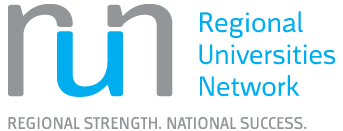CQU education expert proposes 75/25 return to remote learning to fit 'Homo Zappien' learning needs
Australia's education system is on a precipice as the pandemic impacts leave many students struggling to catch up and as teachers leave the profession in droves.
CQUniversity education expert Ken Purnell says a permanent return to regular remote learning could ease pressures and best suit learning needs for our 'Homo Zappien' generation.
'Homo Zappien' a term coined by Dutch educator Wim Zeen, refers to learners who have grown up with devices and online 'information overload' and expect to 'zap' onto the information or connection they need in an instant.
Professor Purnell argues that a new hybrid teaching model with 25 per cent of content delivered remotely would free up school resources and improve student learning and well-being.
"The established norm in Australian schools is one teacher for every 25 students, with learning done face-to-face in a classroom, five days a week…but we may no longer be able to accept this as the norm to deliver better achievements and staff classes," Prof Purnell said.
"Hybrid learning in schools would use face-to-face teaching when it's most appropriate, but also give students and teachers a greater sense of flexibility and independence, by offering best-practice remote learning as standard.
"Senior educators in Queensland have told me up to a quarter of the curriculum content may be best taught online - for all year levels and especially from Year 4 onwards.
"That's because students, learning of certain content can be more personalised online, and students who have the capability to go quickly can do so, without getting bored, while students who need more time can take it."
He also advocates the use of artificial intelligence, or AI, to reduce teachers' current administrative responsibilities and do what they love more - teach.
"Reduced admin could free up about a quarter of teacher time and that's got to be a good outcome for the quality of teaching and for students' experiences as they engage in their learning."
Prof Purnell, who has spent three decades educating aspiring teachers at CQUniversity, said the benefits of remote learning are demonstrated by existing Distance Education programs (that commenced in 1922) for tens of thousands of regional students across Queensland.
"School of Distance Education students consistently perform above state averages for NAPLAN, for example, and parents and students alike relish the independence and flexibility the model offers," he said.
CQUniversity is preparing to launch a new education subject, Remote Learning: Informed by Educational Neuroscience, that upskills teachers to use technology to best engage the brains of young students learning remotely.
Prof Purnell says the content, that he developed with Senior Lecturer Daniel Teghe, acknowledges our plugged-in "network society".
"Throughout the pandemic, many schools and teachers tried to offer remote learning that replicated face-to-face classrooms, but that's rarely effective," Prof Purnell explained.
"The subject will transition teachers to a very different mode of engaging learners in remote learning, and develop better understanding of online platforms and technologies that allow our 'Homo Zappiens' to social network, collaborate and get interactive with learning."
With the Australian Government forecasting that another 50,000 teachers will give up the profession by 2025, Prof Purnell says the education system needs considerable restructuring to attract more teachers and ensure students disadvantaged by the pandemic can get the support they need.
He advocates for teacher education degrees that offer 'hyperflexible' self-paced curriculum, with half the degree spent in "mentorship" roles with schools, where the student-teacher is paid half a teacher's salary.
"Our current process for training teachers, across a four-year degree and limited options to earn income, is a real turn-off for most mature Australians," he said.
"We know seven million Australians are of workforce age but not working and we need to identify how to attract this cohort to a career in teaching, and teaching in a way that's sustainable for the workforce, and best for our students. And better cater for career transitioning into teaching."
